目次
In the previous article, I introduced the fictitious mobile application “Stormie”. Stormie demonstrates how Design Thinking (UX) provides designers with a problem solving process to come up with innovative solutions for problems facing a particular audience.
In this article, I will dive further into how I applied Design Thinking for Stormie, covering stage 1 of the process, “Empathize”.
Overview
The Design Thinking process helps designers learn about the user, their needs, and come up with new ideas for innovative solutions. These ideas are then turned into a prototype and tested to refine the usability for creating better solutions.
The empathize and define stages help define the problem space. And the ideation stage helps us come up with useful and innovative ideas for prototyping and testing. The prototype and test stages make the solution easy to use and provide feedback for further iteration (ideation, prototyping, and testing).
Stage 1, Empathize: Research user needs
The first step is to understand and empathize with the users. In our case, the users are aspiring writers. To better understand the needs of aspiring writers, research is required. There are different dimensions and research methods within UX research. The goal for each method is to better understand the user and their needs. If done properly, the methods will generate quality user data for synthesis in the next stage, “Define”.
Common user research methods
- User interviews
- Usability studies
- Surveys
- User data analysis
- Ethnographic field studies
- Participatory design
Stormie UX research method: User interviews


For “Stormie”, user interviews is our research method. To learn more about aspiring writers and the problems they face, in-person user interviews were conducted. Writers from community writing centers were asked questions about their writing goals, a typical day with writing, lifestyle, current tools, ideation process, tasks, and problems.
Before conducting the interviews, prepare a simple script to introduce yourself, the purpose and goal of the interview. In the end, thank them for their time and ask if they know any other users (writers in our case) you can reach out to for interviews – preferably with similar problems. Referrals are a great way to find your target audience and early adopters.
Stormie interview questions
- When did you start writing?
- Why do you write?
- Do you have a writing goal?
- How are you progressing towards the goal?
- Is there anything preventing you from achieving this goal?
- Do you have a writing goal?
- What types of writing do you do?
- Is it long form like a book or shorter form like a short story?
- How does writing make you feel?
- When do you feel this way?
- What do you write about?
- When do you write?
- When do you write most?
- Where are you when you write? At home, work…?
- Do you currently use any writing tools or applications?
- If so, what? Do they help? If not, why not? If so, how?
- Have you used any writing tools or applications in the past?
- If so, what? Did they help? If not, why not? If so, how?
- Can you describe a typical writing day?
- How do you come up with ideas to write about?
- Can you describe the idea generation process, and going from idea to writing it down?
- What is the biggest pain about your writing process?
- If you could wave a magic wand and change anything in your writing process, what would it be?
If done properly, user interviews are one of the most useful UX research methods. Interviews allow the designer to learn first hand what the issues are. Follow the tips below to ensure you get the most out of the interviews.
And remember, just because a user says something doesn’t mean it’s true. Listen carefully to what users do, think and feel as well. The truth is a mix between what users say, do, think, and feel.
User interview tips
Great questions to ask for any product
Tailor the below to your audience.
- What is the biggest pain about how you work?
- If you could wave a magic wand and change anything in what you do, what would it be?
Do
- Have a set of questions you use every time
- Ask open-ended questions
- Ask the same question from multiple angles
- Ask follow-up questions
- Keep your reactions neutral
- Keep the conversation natural
- Talk about solutions last
Don’t
- Don’t ask leading or directed questions
- Don’t ask people what they want
- Don’t ask yes/no questions
- Don’t make assumptions
- Don’t mention other users
- Don’t use jargon
Below are quotes from the interviews. Quotes are useful to highlight information that may be useful for insights and opportunities in the next stage when synthesizing all the data.
Stormie user quotes
“I’ve been trying to write a book for years, but can’t find the time. I’m just so busy.”
“I have tons of ideas all over the place. Organizing them is going to be a nightmare.”
“I can’t seem to write more than a few paragraphs without researching “how to write” online. I never know if what I’m writing is effective or not.”
“I wish there was a way to see where my ideas fit in the overall story structure.”
Next time: review the research data for “problem statement” insights in the Define stage
In the next article, I will show how I found insights from Stormie user research to create a problem statement. A problem statement is a clear and concise summary of the user, their need, and why the need is important to the user. See you in the next stage of Design Thinking, “Define”.


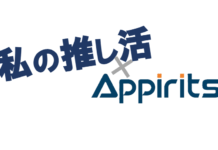




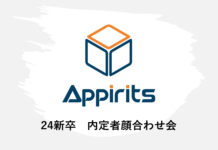








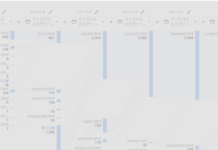
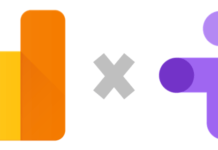
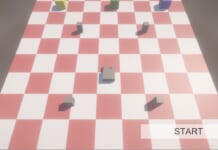












![[Series] PX, the missing link for XD: How to research user needs in Design Thinking “Empathize” stage (Deep user engagement, Part 4) [Series] PX, the missing link for XD: How to research user needs in Design Thinking “Empathize” stage (Deep user engagement, Part 4)](https://spirits.appirits.com/wp-content/uploads/2020/07/library-of-information-768x1055.jpg)










